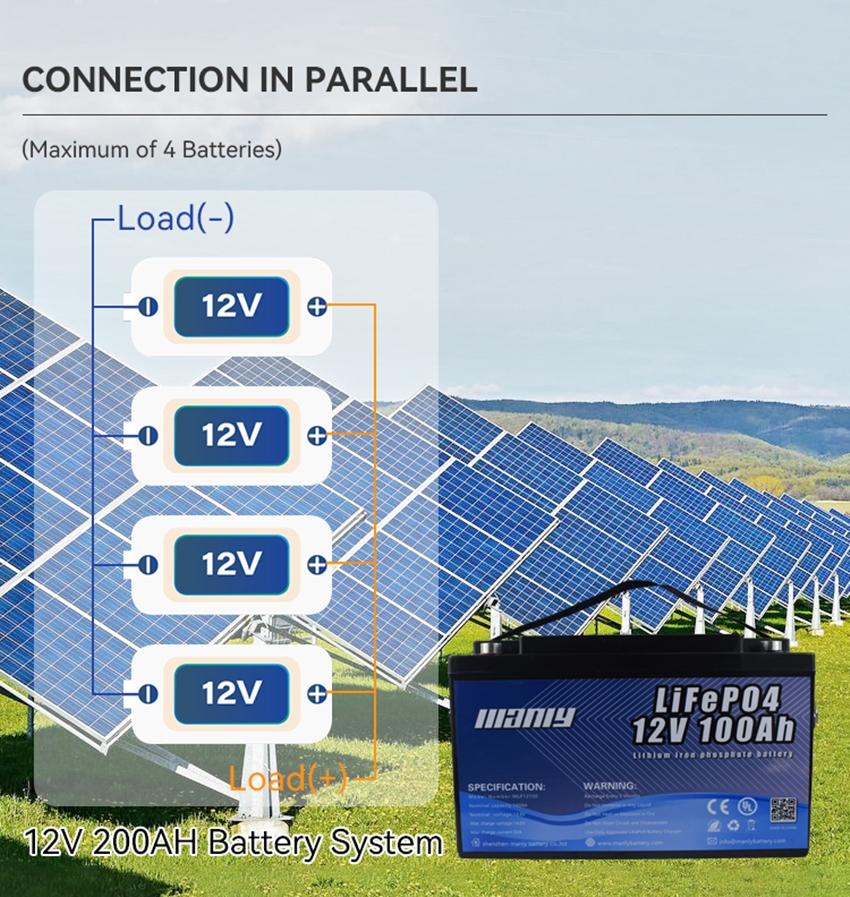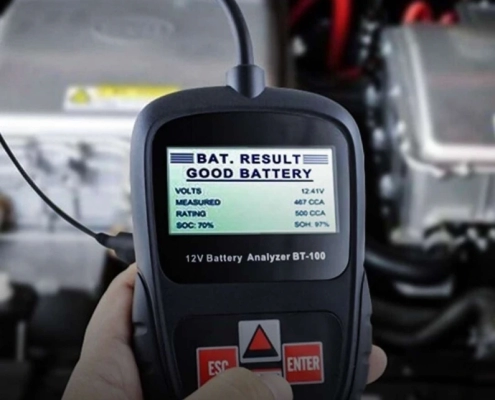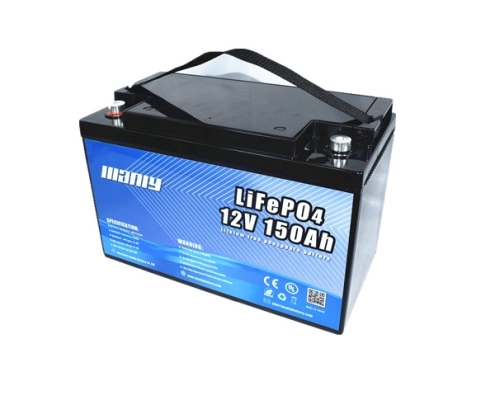2024 Marine Battery Connection Essentials
Table of Contents
Understanding how to connect marine batteries is essential for ensuring the efficient operation of your boat. Whether you opt for a single or dual battery setup, each has its advantages, particularly for different types of watercraft.
Single Battery Setup: Simplicity and Efficiency
A single battery setup is straightforward and commonly used in smaller boats. This simple system involves one battery that powers both the engine start-up and the boat’s electrical tools. It’s an efficient choice for smaller boats with fewer power demands.
Advantages of a Dual Battery System
For larger boats, especially fishing boats, a dual battery setup is often the best choice. This system uses two separate batteries, each designated for specific tasks. One battery is dedicated to starting the engine, while the other powers onboard tools like fish finders, GPS systems, and other essential electronics.

Essential Tips to Connect Your Marine Battery
Selecting the right marine battery involves several key factors. Firstly, it’s crucial to consider the Cold Cranking Amps (CCA). This term indicates a battery’s ability to start an engine in 0-degree Fahrenheit weather for 30 seconds. To ensure your engine fires up in cold conditions, your marine battery should have a CCA higher than what your engine requires. Marine Cranking Amps (MCA) is another essential aspect, which helps determine the power necessary to start boat engines.
Another important factor is the conductor gauge. This needs to match your battery’s size for safety and efficiency. Mismatched gauges and batteries can lead to potential safety risks due to different maximum amp draws.
Lastly, the sizing of your circuit breaker is vital. This device, like a circuit breaker, must be suited to your trolling motor’s specifications. This ensures your boat’s electrical system remains safe and reliable, particularly on long boating journeys.
By understanding these key points, you can make a more informed decision when choosing a marine battery for your vessel.
Boat Power: Marine Battery Connection Tips
When it comes to ensuring your boat is ready for the waters, knowing how to connect a marine battery correctly is pivotal. In this comprehensive guide, we dive into the essential tools and techniques required for an effective marine battery setup. From selecting the right type of batteries to understanding the intricacies of series and parallel wiring, this guide covers all you need to know to empower your marine adventures. Whether you’re a seasoned sailor or new to the nautical world, mastering the art of connecting marine batteries is a skill that will enhance your boating experience, ensuring safety and reliability on the open seas.
Essential Tools for Effective Marine Battery Setup
Before you start installing your marine battery, it’s important to gather the right tools. This will make the installation process smoother and safer. You’ll need a few key items:
- Lithium Marine Batteries: Start with two high-quality lithium marine batteries for a reliable dual setup. These batteries are perfect for marine environments and provide long-lasting power.
- Connection Cables: Get several cables to link the marine batteries with your boat’s start bank terminals. It’s important these cables are durable and suitable for marine conditions.
- Cable Cutters and Wrench: A good pair of cable cutters is essential to trim cables to the right length. Also, an adjustable wrench is needed to ensure all connections are tight and secure.
- Protective Grease: Applying grease to the connections and other electrical parts of your boat is a must. This protects against corrosion, extending the life of your marine battery setup.
- Swagging Tool: This tool is handy for ensuring a tight fit of tubing around brazed connections, keeping everything securely in place.
Having these tools ready will help you install your marine batteries with confidence, ensuring your boat is powered safely and effectively.
Series Wiring for High Power Marine Applications
When it comes to powering large boats or using large inverters, the series wiring method is often the best choice. This section will guide you through the basics of setting up a series wiring system for your marine batteries.
Understanding Series Wiring: In a series wiring setup, you can use 2 to 4 batteries. It’s important that these batteries are alike in age, size, type, and brand. When you connect batteries in series, their voltages add up. For example:
- A 24 Volt system combines two 12-volt deep cycle batteries.
- For 36 Volts, you use three 12-volt batteries.
- And a 48 Volt system requires four 12-volt batteries.
How to Connect in Series: To wire your batteries in series, link the negative terminal of one battery to the positive terminal of the next. Keep connecting them until all batteries are linked. Then, connect the negative terminal of the first battery in the series to your boat’s system. Do the same with the positive terminal of the last battery.
Charging Tips: Always use a charger that matches the total voltage of your battery setup. It’s also a good idea to charge each marine battery individually. This helps prevent any imbalance in the battery system.
By following these steps, you can effectively set up a series wiring system for your marine batteries, ensuring your boat has the power it needs for high-demand applications.
Parallel Wiring: Boosting Battery Capacity in Marine Applications
Parallel wiring is a great way to increase the capacity of your marine batteries while keeping the voltage steady. This section explains how parallel wiring works and how to set it up for your marine batteries.
How Parallel Wiring Works: In a parallel setup, the total amperage of your marine batteries increases, leading to longer battery life. It’s essential to use batteries that are similar in age, size, type, and brand. This uniformity ensures the system works efficiently.
Setting Up Parallel Wiring: To wire your marine batteries in parallel, follow these steps:
- Connect a wire from the positive terminal of one battery to the positive terminal of another.
- Do the same with the negative terminals: link the negative terminal of one battery to the negative terminal of the other.
- Finally, on one of the batteries, attach one lead to the positive terminal and another to the negative terminal.
By setting up your marine batteries in parallel, you’ll significantly increase the total power capacity available for your boat, ensuring you have the energy you need for longer journeys or more demanding equipment.

How to Connect Your Marine Batteries Safely
Connecting wires to a marine battery is an important task. You can connect wires to a battery in a few ways. One way is using a solid metal post where you tighten a clamp connection. Another way is by using a threaded post (sizes 1/4 inch, 5/16 inch, or 3/8 inch) where you secure ring terminals with a nut. You might also use bolts to tighten over ring terminals.
When installing marine batteries on a boat, it’s key to tighten nuts onto these threaded posts using a tool. There are two steps to picking the right connector:
- Find the Right Fit: First, look at the size of the battery post. Choose a connector (either a clamp or a ring terminal) that matches this size.
- Wire Size Matters: Next, consider the size of the wire you’ll connect to the battery. Make sure the ring terminal you select fits both the battery post size and the wire size.
By following these steps, you can ensure a secure and safe connection for your marine batteries.
Connect Marine Batteries: Safe & Strong Methods
Proper Wire Crimping for Strong Connections
First, correctly crimping the wire is vital. You should strip the wire’s shield just right to fit into your chosen ring terminal. Then, use a tool that’s the right size to crimp the ring terminal onto the wire firmly. After crimping, do a pull test to check the strength of the connection. The American Boat & Yacht Council (ABYC) offers guidelines under E-11 (table XV) for testing the tensile strength of connections.
Protecting the Connection
It’s important to protect the connection from water and air that can cause rust. Do this by putting shrink-tubing over where the ring terminal and wire meet. Make sure the tubing is the right size so it fits snugly after heating.
Stacking Terminals the Right Way
When stacking terminals on a battery post, start with the ring terminal that has the heaviest load (like the one going to the starter battery) at the bottom. This way, the biggest part of the ring touches the biggest part of the post. Stack the other terminals from the biggest to the smallest on top. Be careful with thin rings on top as tightening the nut too much can damage them. Adjust the order of stacking to avoid this.
Choosing the Right Nut and Applying the Right Torque
Always use a standard nut to hold the ring terminals. Avoid using a wing nut or lock-nut. A standard nut has a good surface area for holding the rings and can be tightened to a specific strength (usually 100 lbs.-in.).
Limiting the Number of Connections
You should only have up to four connections on each post. If you need more, use a bus bar near the battery for the wires with less current. Connect the bus bar to the battery post with a single wire.
Following these steps will ensure your marine battery connections are not only safe and secure but also reliable.
Why These Steps Matter
Following these steps is crucial for good electrical flow between the battery posts and ring terminals, which stops voltage drops. This is especially important for heavy uses like starting the motor and for sensitive electronics. Using shrink-tubing, correctly stacking terminals, picking the right size ring terminals, and using bus bars helps prevent corrosion and voltage drops. Correct terminal sizes, proper crimping, and right torque also prevent sparks and electrical arcing.
Additional Battery Safety Tips
Secure your batteries in trays or boxes with straps to prevent movement, spills, or damage while the boat is moving. If the battery is in a covered box, make sure it’s ventilated to let gases out. If you’re using a tray or another method, cover the positive and negative posts with rubber boots. This stops them from touching each other or any metal parts of the boat.
Remember, battery safety is tied to how well the battery works and how long it lasts. Take some time before spring to check and adjust your boat’s battery setup for a smooth sailing season.





